Dairy farming in Thailand is an emerging sector with immense potential for local farmers and consumers. It is the process of raising and breeding cattle specifically for milk production. Dairy farming provides dairy products such as milk, cheese, butter, and yogurt.
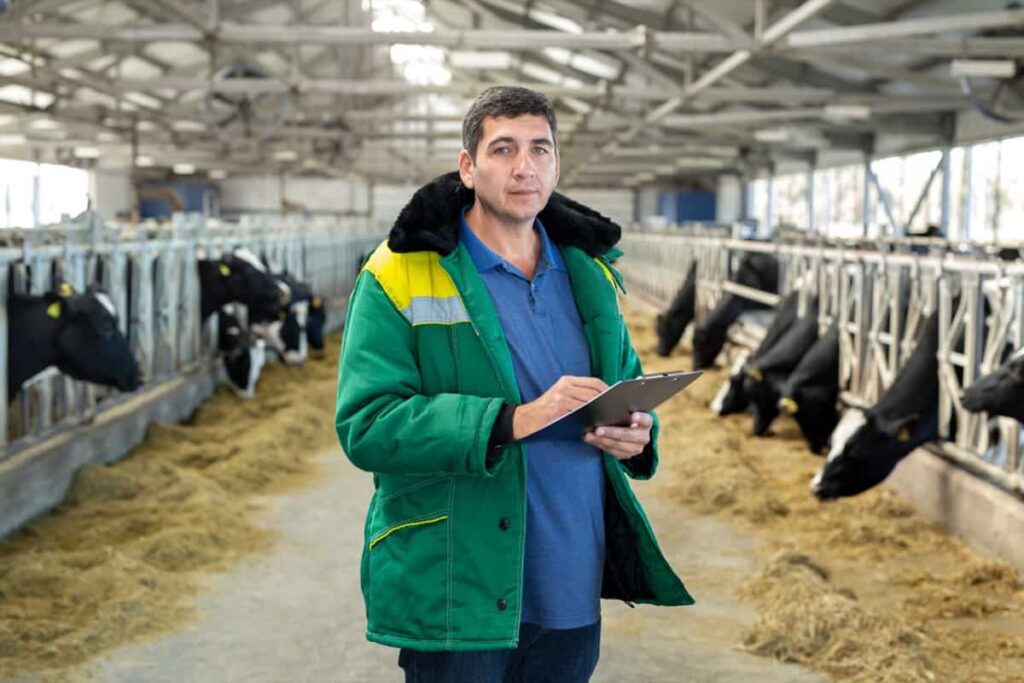
Dairy Breeds in Thailand
There are four native breeds officially recognized by the Department of Livestock, Ministry of Agriculture, Thailand, namely Kho-Khaolumpoon (northern Thailand origin, THR), Kho-Isaan (northeastern Thailand, THNE), Kho-Lan (central Thailand, THC) and Kho-Chon (southern Thailand, THS).
These breeds have been carefully selected and adapted to the local climate and conditions, making them well-suited for milk production. One of the native breeds officially recognized by the Department of Livestock is Kho-Khaolumpoon, which originates from northern Thailand. This breed is known for its ability to thrive in cooler climates and produce high-quality milk. Another native breed is Kho-Isaan, which hails from northeastern Thailand.
These cows are well-adapted to hot and humid conditions and are known for their resilience and milk production capacity. In central Thailand, the Kho-Lan breed is bred specifically for milk production. They are known for their docile temperament and excellent milk yield. The Kho-Chon breed from southern Thailand has also gained recognition as a suitable dairy breed. With good adaptability to tropical climates, these cows can withstand heat stress while producing quality milk.
Advantages of Dairy Farming in Thailand
Dairy farming in Thailand offers several advantages for farmers and the overall agriculture industry. The climate in Thailand is favorable for dairy farming as it provides a year-round growing season, ensuring a constant supply of feed for cows. This eliminates the need to rely heavily on imported feed and reduces costs.
Additionally, Thailand has abundant water resources, essential for dairy farming operations. Ample access to clean water ensures hydration and sanitation for cows, resulting in healthier animals and higher milk production. Moreover, Thai dairy farmers have access to advanced breeding techniques and technologies that allow them to improve the quality of their herds. Farmers can develop high-yielding cows with desirable traits such as disease resistance and milk production efficiency through selective breeding programs.
In case you missed it: Poultry Farming in Thailand: Breeds, Techniques, and License to Start
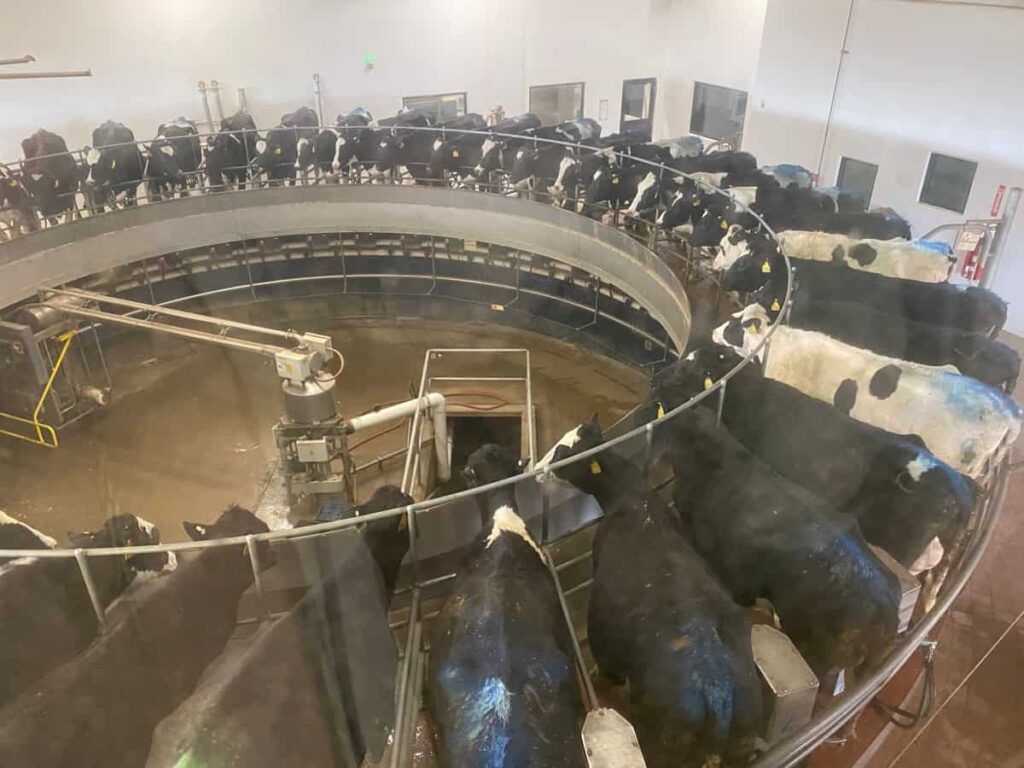
Furthermore, the growing demand for dairy products within Thailand presents a significant market opportunity for local farmers. With an increasing population and changing dietary preferences toward dairy consumption, a strong domestic market potential allows farmers to establish profitable businesses. Dairy farming contributes to rural development by creating job opportunities and stimulating economic growth in remote areas of the country.
Best Practices for Dairy Farming in Thailand
Investing in high-quality dairy breeds well-suited to the local climate and conditions is crucial. In addition to selecting the right breed, proper nutrition is vital in maintaining healthy cows and maximizing milk production. Farmers should provide a balanced diet of fresh grass, hay, or silage as roughage sources and concentrate such as grains or protein-rich feed supplements.
Regular health checks and vaccinations are essential to prevent diseases and maintain herd health. Working closely with veterinarians specializing in dairy cattle to develop an effective preventive healthcare program tailored to specific farm needs is recommended. Furthermore, ensuring clean and comfortable housing for the cows is crucial for their overall well-being.
Adequate ventilation, proper drainage systems, regular cleaning routines, and spacious resting areas are all important elements of cow comfort. Proper waste management is another critical aspect of successful dairy farming. Implementing efficient manure management systems helps protect the environment and improves farm hygiene.
Does Thailand Have Dairy Farms?
One of Thailand’s most prominent regions for dairy farming is Nakhon Ratchasima, located in the northeastern part of the country. This region boasts several large-scale dairy farms contributing significantly to Thailand’s milk production. Saraburi and Lopburi, situated in central Thailand, are also key players in the country’s dairy industry. These regions have favorable agricultural conditions and ample grazing land, making them ideal locations for dairy farming.
In case you missed it: Fish Farming in Thailand: Requirements, Types of Fish, and Government Support
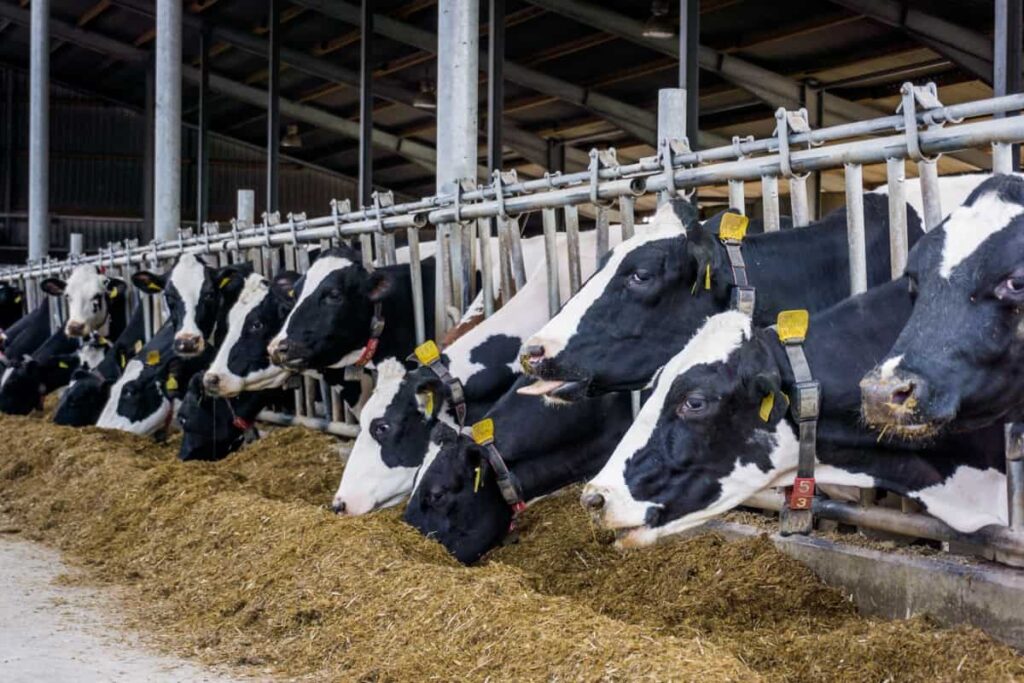
You can find thriving dairy farms in Chiang Mai, Ratchaburi, and Prachuap Khiri Khan. Despite being situated in different parts of northern and central Thailand, these regions share a common goal: to produce high-quality milk while promoting sustainable practices. Many farmers here focus on implementing best practices to ensure animal welfare and minimize environmental impact.
Sustainable Practices in Thai Dairy Farming
Dairy farmers in Thailand understand the importance of conserving water resources and have implemented measures such as rainwater harvesting and drip irrigation systems. These methods not only reduce water consumption but also help maintain soil fertility. One important aspect of sustainability in Thai dairy farming is adopting environmentally friendly practices. Many farmers have implemented measures to reduce their environmental impact, such as proper waste management and water conservation techniques.
Another sustainable practice is organic waste management. Farmers utilize cow dung, leftover feed, and other organic materials as fertilizers for crops or biogas production. This reduces waste disposal problems while harnessing natural resources effectively. Moreover, many dairy farmers prioritize animal welfare by providing comfortable living conditions for cows. They ensure proper ventilation, clean bedding, and ample space for movement. Cows are also fed a balanced diet to promote their health and productivity.
Additionally, there has been a focus on improving animal welfare standards. Farmers increasingly provide comfortable living conditions for their cows and implement proper feeding and healthcare protocols. Furthermore, efforts have been made to enhance the overall efficiency of dairy production. This includes optimizing feed formulations to ensure maximum nutrition for cows while minimizing waste. It also involves investing in modern technology and equipment to streamline operations and reduce energy consumption.
Moreover, there has been an emphasis on developing local supply chains to promote self-sufficiency in the industry. This reduces dependency on imports and supports local farmers by creating opportunities for growth and development. Thailand’s dairy sector continues to move towards a more sustainable future through initiatives to reduce environmental impact, improve animal welfare, enhance efficiency, promote self-sufficiency, and support local farmers.
License and Permissions Required for Dairy Farming in Thailand
Starting a dairy farming business in Thailand requires obtaining the necessary licenses and permissions. Complying with the country’s regulations is essential to ensure smooth operations and avoid legal issues. Farmers must register their farms with the Department of Livestock Development (DLD). This registration process involves providing information about the farm’s location, size, and intended activities. The DLD will then assess whether the proposed farm meets their standards.
In case you missed it: Pig Farming in Thailand: Breeds, License, and Permissions to Start
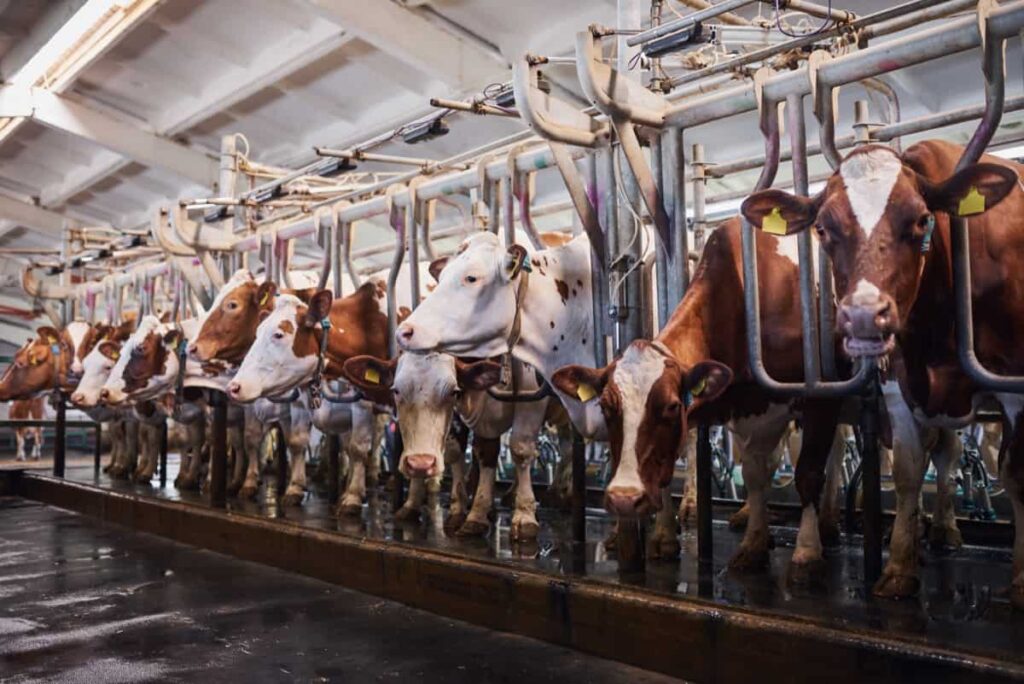
Additionally, dairy farmers must obtain a livestock production license from the DLD. This license ensures that all aspects of animal welfare and hygiene are maintained on the farm. Furthermore, environmental permits may be required if there are plans for waste management or effluent treatment systems on the farm. These permits aim to protect local ecosystems and prevent pollution.
It is also important to note that zoning regulations may apply when selecting a suitable location for a dairy farm. Certain areas may have restrictions on livestock farming due to factors such as urban development or environmental sensitivity. Aspiring dairy farmers should seek guidance from agricultural authorities or industry associations regarding specific requirements based on their location within Thailand.
Government Support for the Dairy Farming Industry in Thailand
They coordinated with the Thai government to establish the Thai-Danish Dairy Farm (TDDF) and a training center in Muak Lek District, Saraburi. The Thai-Danish Dairy Farm (TDDF) and training center located in Muak Lek District, Saraburi, are a testament to this partnership. This facility is a hub for research, knowledge sharing, and technical assistance for dairy farmers across Thailand.
It provides valuable resources on best practices, breeding techniques, nutrition management, and more. The DPO (Dairy Farming Promotion Organization) of Thailand also actively promotes and supports dairy farming initiatives nationwide. They offer various programs to enhance productivity while ensuring sustainable practices are followed.
These include training programs for farmers on modern farming techniques and financial support schemes to help them invest in equipment or infrastructure upgrades. Through these collaborative efforts with government agencies, dairy farmers receive the necessary guidance to improve their operations effectively. This support system enables them to overcome challenges faced within the industry while staying up-to-date with evolving trends.
Dairy Farming Techniques Used in Thailand
One common dairy farming technique is using barns or sheds to house dairy cattle. These structures provide a controlled environment that helps protect the animals from extreme weather conditions and predators. Another important technique is proper nutrition management for dairy cows. Thai farmers ensure their cattle receive a balanced grass, hay, and concentrated diet.
They also focus on providing clean water and mineral supplements to meet the nutritional requirements of their cows. Milking techniques in Thailand have also seen advancements. Farmers now employ mechanized milking systems that help improve efficiency and reduce labor costs. This method ensures hygienic milk production while minimizing stress on the animals.
To maintain cow health, preventive healthcare measures are taken by Thai dairy farmers. Regular veterinary check-ups, vaccinations, deworming, and timely treatment of any illnesses are all part of their routine care practices. Furthermore, waste management is crucial in maintaining cleanliness on dairy farms. Proper disposal methods for manure are implemented to prevent environmental pollution and safeguard public health.
Dairy Feed Production in Thailand
The right feeding plays a crucial role in ensuring the health and productivity of the animals. In Thailand, various methods are employed to produce nutritious and balanced feed for dairy cows. Farmers rely on locally available resources such as grasses, legumes, and silage crops like corn or sorghum. These crops are harvested and preserved to provide a consistent fodder supply throughout the year.
Farmers often supplement these feeds with concentrates that contain essential nutrients like protein, vitamins, and minerals. Furthermore, many dairy farms in Thailand have adopted modern techniques for feed production. This includes using advanced machinery for harvesting and processing feeds efficiently. Some farms use automated systems to mix ingredients based on specific nutritional requirements.
In case you missed it: How to Start Dragon Fruit Farming/Pitaya in Thailand: A Step-by-Step Guide for Beginners
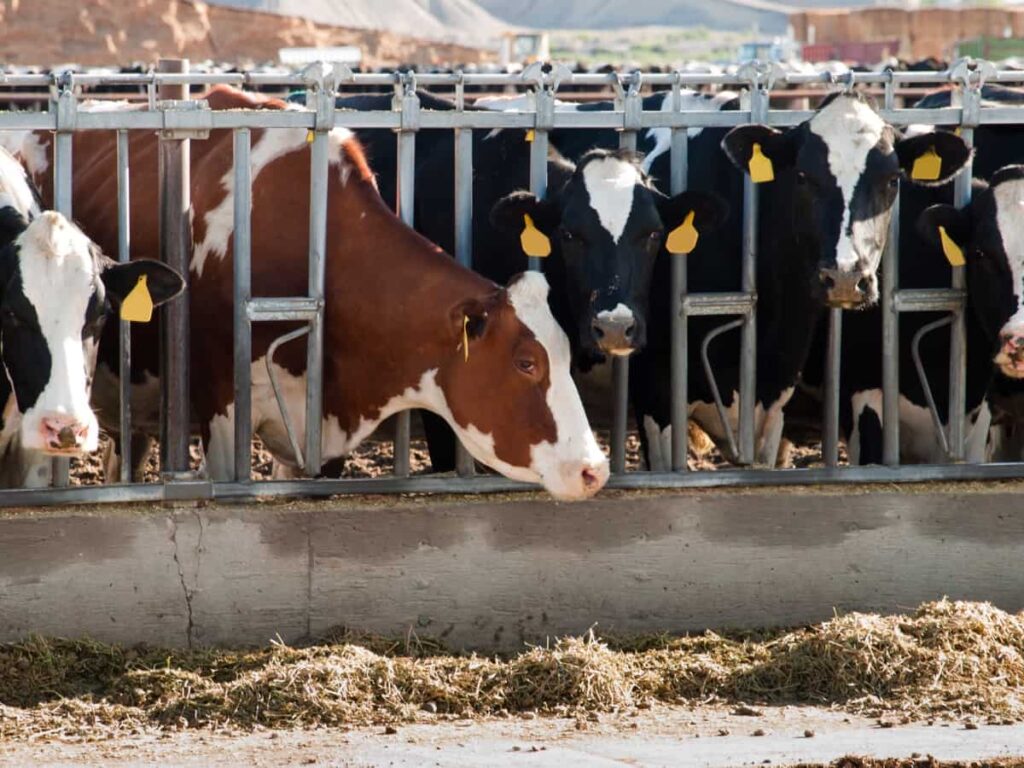
Moreover, sustainable practices are gaining traction in Thai dairy farming regarding feed production. Farmers are increasingly exploring alternative protein sources such as soybean meal or oilseed cakes instead of relying solely on imported soybean products. By prioritizing high-quality feed production, Thai dairy farmers can ensure optimal cow health and milk production while reducing their dependence on external sources for cattle nutrition.
Steps To Start Dairy Farming in Thailand
- Research and Planning: Begin by conducting thorough research on the dairy industry in Thailand, including market demand, competition, and potential profitability. Develop a dairy business plan outlining your goals, target market, financial projections, and operational strategies.
- Secure Land and Facilities: Identify suitable land for your dairy farm with ample water supply and good pasture or forage options. Build or renovate appropriate facilities such as barns, milking parlors, storage areas, and calf-rearing units.
- Select Dairy Breeds: Choose the right breed of cows based on their adaptability to local conditions, milk production capacity, disease resistance qualities, and availability of breeding stock.
- Acquire Permits and Licenses: Obtain the permits and licenses required by the Thai government for operating a dairy farm. Business registration with relevant authorities is also essential.
- Build Infrastructure & Procure Equipment: Construct necessary infrastructure like sheds, barns, cow houses, etc. Invest in quality equipment like milking machines, pasteurizers, chilling tanks, feed grinding machines, etc.
- Develop Feed Management Plan: Create a comprehensive plan that includes proper nutrition formulation, daily feeding schedules, sourcing high-quality feed ingredients, establishing relationships with reliable suppliers, etc.
- Carefully Manage Animal Health: Ensure regular veterinary check-ups, vaccinations, treatments, worm control measures, grooming, and preventive care practices are implemented diligently to maintain animal health standards.
Challenges Faced by Dairy Farmers in Thailand
One major challenge faced by dairy farmers in Thailand is the hot and humid climate, which can impact milk production and cow health. The high temperatures can cause heat stress among cows, decreasing milk yield and fertility issues. Another challenge is the availability of quality feed for the cows. While there are efforts to improve feed production, sourcing nutritious feed remains a concern for many farmers. This directly impacts the overall health and productivity of the herd.
Disease control is also a significant challenge for dairy farmers in Thailand. Diseases like mastitis and foot-and-mouth can spread quickly among cows without proper prevention. Regular veterinary check-ups and implementing strict biosecurity protocols are crucial to minimize such risks.
Additionally, there is a lack of skilled labor in the dairy farming sector. Training programs focusing on modern dairy management techniques would greatly benefit new and experienced farmers. Marketing and distribution channels pose a challenge for small-scale dairy farmers who struggle to reach wider consumer markets. Developing efficient supply chains that ensure timely delivery of fresh milk products could help overcome this hurdle.
Market Opportunities for Thai Dairy Farmers
One of the key market opportunities lies in the production of fresh milk. With an increasing number of consumers seeking locally sourced, organic products, there is a strong demand for fresh milk from Thai dairy farms. This presents an excellent opportunity for farmers to establish their brands and cater to this niche market segment.
In case you missed it: Sheep Milk Production: Lactation Period, Uses, Benefits, Price, and Dairy Sheep Breeds
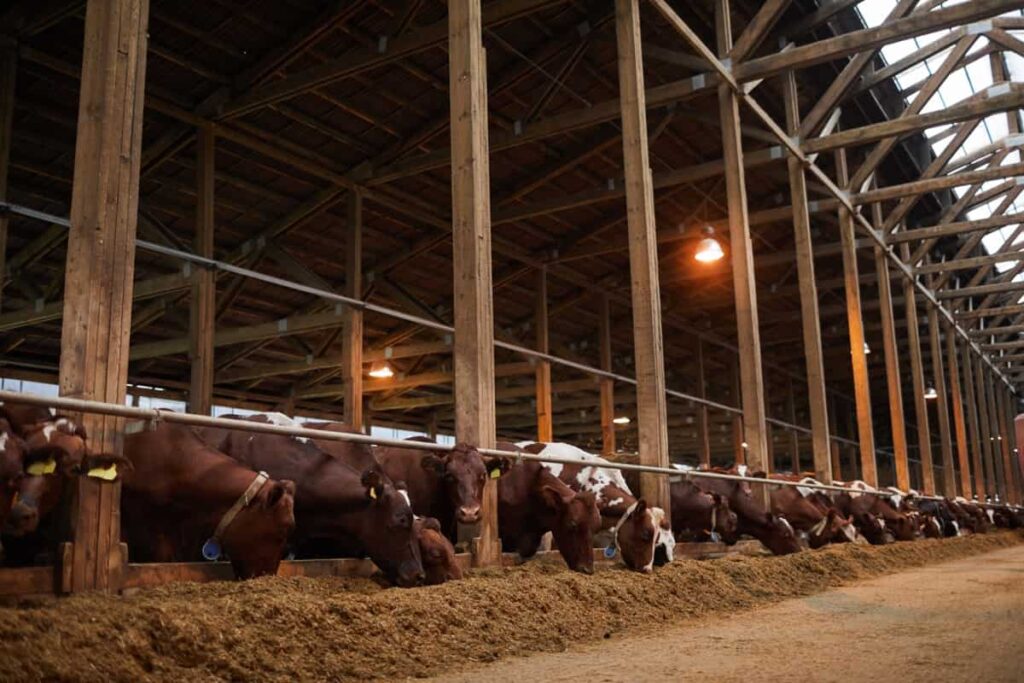
Additionally, there is a rising demand for value-added dairy products. These products offer higher profit margins and can be marketed to domestic consumers and tourists visiting Thailand. Dairy farmers can tap into these lucrative markets by diversifying their product range. Furthermore, Thailand’s strategic location in Southeast Asia has the potential for exporting dairy products to neighboring countries.
Conclusion
Dairy farming requires careful management practices to maintain optimal conditions for cow comfort and maximize milk production. This involves maintaining clean barns with adequate ventilation systems to prevent diseases and infections. Dairy farmers follow a systematic approach to maintain the productivity of their livestock. This includes proper feeding, regular milking, veterinary care, and genetic improvement through selective breeding. Dairy farming helps meet the country’s growing demand for milk and dairy products.
- Profitable Village Farming Business Ideas in 2024
- High-Yield Aquaculture: Fast-Growing Fish for Farming
- Effective Fish Pond Construction Techniques for Beginners
- Irrigation and Water Management in Pineapple Farming
- Blossom to Harvest: Mastering Flowering and Pollination in Papaya Farming
- Pig Fattening Essentials: From Selection to Sale for Beginners
- Raising Wagyu Cattle: A Complete Guide for Premium Beef Production
- Soil Types and Their Water Holding Capacity
- Optimizing Irrigation Schedules for Coconut Groves for Enhanced Yield
- Espresso Your Garden: Coffee Grounds for Healthier Acid-Loving Plants
- The Best Soil Mix for Snake Plants: How to Mix Your Own Snake Plant Soil
- Green Thumb Success: Expert Tips for Cultivating Greenhouse Beans All Year Round
- Bloom All Year Round: The Ultimate Guide to Indoor Hyacinth Care
- Eco-Friendly Gardening: How to Make Liquid Fertilizer from Kitchen Waste
- Ultimate Guide to Grow Anise in Pots: Explore Seed Propagation to Harvesting
- Guide to Raising Chester White Pigs: Discover Breed Facts to Growth Management
- Mastering the Elegance: The Ultimate Guide to Weeping Cherry Tree Care, Planting, and Maintenance
- Ultimate Guide to Planting Garlic in Grow Bags: Growing Strategies for Beginners
- How to Fix Spider Plant Leaf-Related Problems: Natural and Organic Remedies
- 10 Reasons Why Your Tulsi Plant is Shedding Leaves: Home Remedies and Solutions
- Optimizing Growth and Yield: The Advantages of Palm Bunch Ash Fertilizer
- Utilizing Neem Oil Extract as a Natural Pesticide for Hydrangea
- From Soil to Harvest: Various Ways in Which Farmers Can Use AI Tools
- Steps to Encourage and Induce Citrus Flowers: A Comprehensive Guide
- How to Fix Snake Plant Leaf-Related Issues: Natural and Organic Remedies
- Transform Your Garden into a Fragrant Oasis with Raat Ki Rani (Night Blooming Jasmine)
- Discover the Ideal Chicken Breeds for Philippine Farms
- How to Create a Poultry Egg Farm Business Plan for Profits
- Grow Lemon Cucumbers Like a Pro: Insider Techniques for Bountiful Yields
- Ultimate Guide to Caring for Your Pink Princess Philodendron: Tips for Thriving Variegation
- Areca Nut Profit Per Acre: Calculating Yield and Cost of Cultivation
- How Kaveri Chicken is Becoming a More Profitable Breed in Indian Backyards
- Transform Your Barn: 9 Steps to Convert a Horse Stall into a Chicken Coop
- Exploring Suffolk Sheep Disadvantages with Limitations and Challenges
- Guide to Solving Potted Lemon Tree Problems: How to Revive Lemon Tree in Containers
- Steps to Encourage Female Pumpkin Flowers: Best Strategies for More Flowers and High Yields
